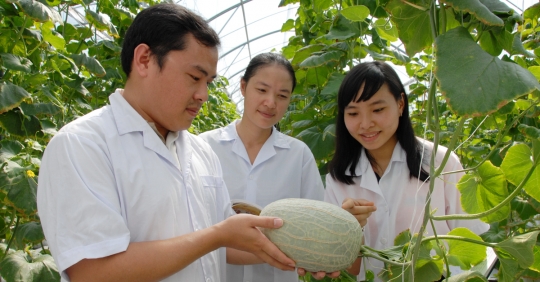[ad_1]
Typical ecological agricultural production models are emerging in the Mekong Delta. The agribusiness movement also forms the basis for organic farming.
Typical ecological production models
In the Mekong Delta, the currently typical organic farming models can be named as follows: Raising wild boar by Mr. Doan Phan Dinh (An Hoa hamlet, An Khanh commune, Chau Thanh district, Dong Thap province); Rice cultivation without chemical spraying by Mr. Phan Hoang Em (Phu Thanh A Township, Tam Nong District, Dong Thap Province); Suffering from Mr. Truong Huu Thuan’s Clean Forest (in Phu Thu District, Cai Rang District, Can Tho City); Growing Organic Longan in the Nhon Nghia Longan Cooperative (Nhon Nghia Municipality, Phong Dien District, Can Tho City)…
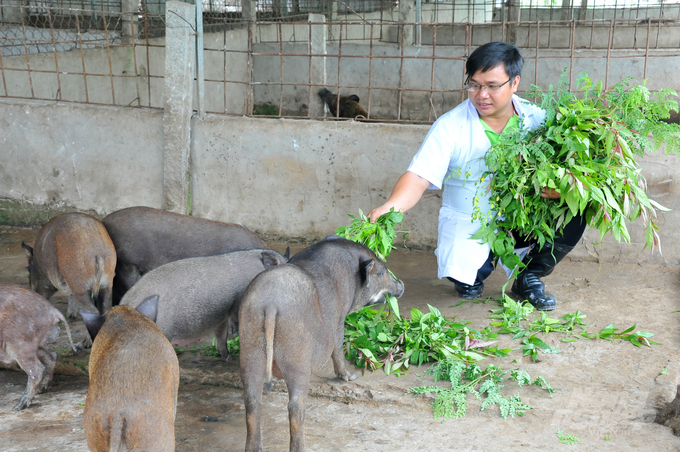
The model of large-scale wild boar farming for vegetables and organic padding by Mr. Doan Phan Dinh in Chau Thanh (Dong Thap) district. Picture: Le Hoang Vu.
In early March, we visited Mr. Doan Phan Dinh’s large-scale plant-based feeding and organic padding wild boar breeding model in Chau Thanh (Dong Thap) district. This is a model that makes over 1 billion VND in profits per year. Mr. Dinh said that his organic boar husbandry model is strictly and coherently managed, bringing high economic efficiency and being in line with current agribusiness policies.
Besides opening a farm to raise nearly 100 pigs at home, Mr. Dinh also works with many households in every province and city in the Mekong Delta to raise thousands of wild boar of all kinds (breeding pigs, piglets and breeding pigs). Accordingly, Mr. Dinh provides farmers with technical support and product consumption. In 2022, the number of pigs associated with the sale will be up to thousands of pigs, bringing quite a lot of sales.
According to Mr. Dinh, the bio-organic boar pen is built with ventilation, using biological padding to control waste well and isolate pathogens effectively. In addition to pure bran feed, wild boar can also eat vegetables, tubers, fruit… Pigs that are sick are given herbal medicine or some probiotics that they made themselves or bought from pharmaceutical companies. for livestock and poultry.
Farmer Nguyen Minh Tuan also achieved great success in the Tam Nong district with the model of organic rice cultivation combined with duck farming and fish farming in the field. Mr. Tuan said that in the flood season, farmers in Phu Thanh A Township have 8 households covering nearly 35 hectares that cultivate organically. In the flood season, they plant seedlings on the field to raise them naturally. Earn hundreds of millions of Dong. . After harvesting these batches of fish, farmers planted winter-spring rice seeds, most of these fields were fertilized with organic fertilizer and seeded ST25 rice. When the rice is strong, they start releasing fish to the field of breeding, in addition, they also release ducks to the field to eat harmful organisms such as worms, aphids, etc. to reduce the cost of spraying.
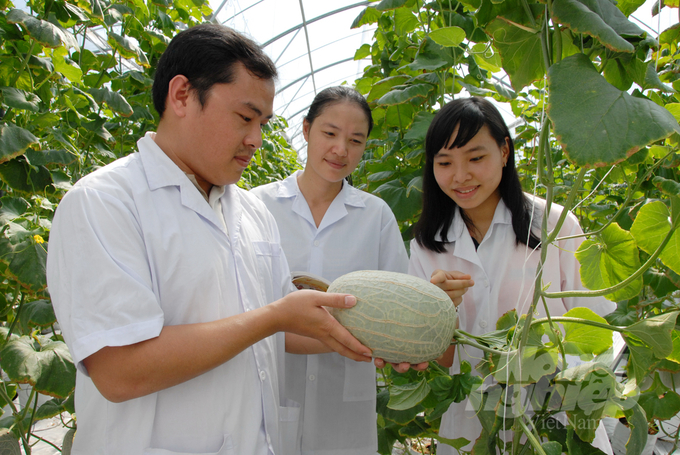
Agricultural production in the direction of organic and circular is gradually spreading in the Mekong Delta. Picture: Le Hoang Vu.
“Tam Nong District has long been an important rice-growing area in the province. This rice-fish-duck farming model originally proved suitable for low-lying areas such as Tam Nong, but at the end of the rice harvest, it gives high yields, greatly reduces chemical fertilizer costs, and is widely accepted by companies to grow rice at a high price,” shared Mr. Nguyen Minh Tuan.
The organic rice-fish-duck cultivation model in Tam Nong district was visited by Minister of Agriculture and Rural Development Le Minh Hoan, and highly appreciated the creativity of farmers in Pink Lotus Land. According to him, the production of organic rice combined with duck farming and natural fish farming is a cyclical process that reduces emissions and increases income in a limited area. This model is very promising, so the place and the agricultural sector must continue to support farmers to expand their scale and research and transfer them to areas with similar conditions.
The Nhon Nghia Longan Cooperative in Phong Dien District (Can Tho City) applies the longan production process according to VietGAP standards, focusing on the use of organic fertilizers and biological pesticides. As a result, it has helped reduce costs and increase profits for Langan growers (VND 200-400 million/ha/year).
Mr. Pham Van Le, Chairman and Director of Nhon Nghia Longan Cooperative said: The Cooperative currently has 29 members covering more than 22.8 hectares of longan cultivation, of which mainly Ido Longan varieties. This is a kind of longan for productivity, very good yield and almost no dragon broom disease, and can be made into fruit all year round.
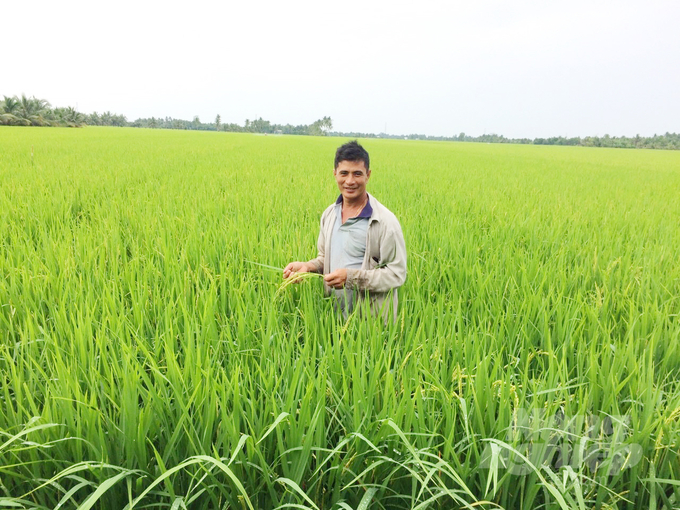
Rice-fish-duck biological combination model in Tam Nong (Dong Thap) district. Picture: Le Hoang Vu.
For more than 2 years, the members of the cooperative have also been producing according to the VietGAP process, in order to create high quality and safe products that meet the needs of consumption and export. At present, the cooperative continues to increase the use of organic fertilizers and biological pesticides to gradually limit the amount of chemical fertilizers, not only reducing production costs, but also ensuring safe products, while contributing to environmental protection and health protection for farmers and consumers. It is estimated that longan farmers can reduce production costs by more than 20% if production processes are well implemented toward safety and reduction of chemical fertilizers.
Laying the foundation for responsible agriculture
Mr. Pham Thien Nghia, Chairman of Dong Thap Provincial People’s Committee, said: Based on comparative advantage and market potential, the provincial people’s committee has identified 5 major commodity industries to focus on developing, including rice, mango, ornamental flowers, pangasius and Duck . Pangasius in particular is the most concerned, so the province actively helps enterprises and farm households to adopt advanced production methods, ensure quality and safety, so that the profit reaches more than VND 500 million/ha/year.
To date, Dong Thap is the largest pangasius farming and exporting community in the Mekong Delta and the entire country. The initial success in Dong Thap’s sustainable agricultural development is due to the government accompanying businesses and attracting many companies to invest and associate with farmers. In the last 6 years, dozens of projects have been granted investment certificates in agriculture. The Provincial People’s Committee also promoted the development of various forms of cooperation, forming more than 180 cooperatives, 940 cooperative groups and 110 farms. This is also the basis for the development of organic, circular agriculture in a favorable manner.
In Can Tho City, the city’s agricultural sector has worked with a number of companies to implement organic production models for rice and fruit trees. In addition, the city also has many models for the application of high technology, produced according to GAP standards, to serve as the basis for organic farming. With the focus on the development and replication of the organic agricultural production model, Can Tho City has surveyed and aligned the organic production planning of about 4,000 ha of rice, 1,300 ha of fruit trees and 150 ha of vegetables; Organic aquaculture is located in paddy fields and orchards.
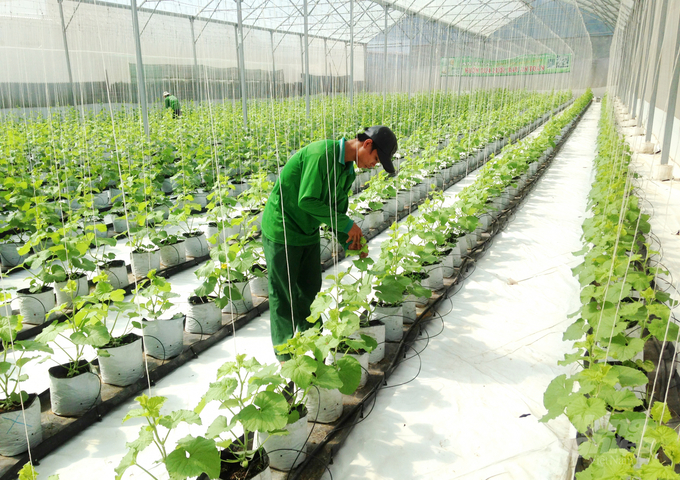
The change in awareness and production has laid important foundations for organic farming in the Mekong Delta. Picture: Le Hoang Vu.
According to Agriculture and Rural Development Minister Le Minh Hoan, thinking about the agricultural economy has changed significantly in recent times. That’s because companies, cooperatives and farmers have realized that they need to target higher tier agricultural export markets to achieve greater value and profits. Changing production awareness and thinking has helped to form commodity areas with close ties between companies and farmers.
“We always encourage and appreciate companies that have boldly invested in agriculture, associated with cooperatives, cooperative groups, farmers, leading from seed, to market, to quantity, and at the same time mentioned agricultural process requirements according to specific quality standards for each market and support farmers. That too is a remarkable transformation. Now we have to think long-term and think of all parties involved in the value chain of agricultural products,” Minister Le Minh Hoan said.
Minister Le Minh Hoan stated that the direction needs to change actively in order to build the image of responsible and sustainable agriculture. At the United Nations Climate Change Conference (COP 26), Vietnam committed to both ensuring production growth, protecting the environment, developing responsible and sustainable agriculture, participating in global value chains, participating in the global food and food supply system, etc. These commitments must be translated into concrete actions through the responsibilities of functional sectors, companies and farmers.
[ad_2]
Source link

